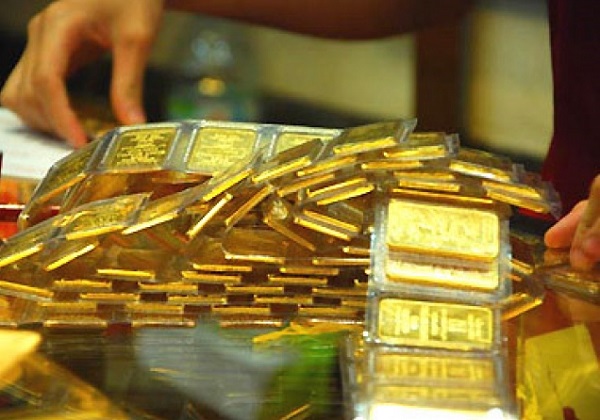Central Bank seeking comments on amendment to gold management decree
 |
Along with the goal of continuing to manage the gold bar market, the amendment aims to simplify administrative procedures and reduce business conditions.
Enterprises that manufacture gold jewelry and fine arts need only meet the establishment conditions in the law to be registered. Other rules on certificates of production and technical facilities will be eliminated.
Some 5,800 enterprises hold certificates for gold jewelry and fine art production but problems exist in the operation of these types of enterprises, according to the SBV, with administrative procedures needing to be simplified.
For gold bar trading activities, the SBV also suggests reducing regulations on procedures for adjusting business licenses in the spirit of cutting unnecessary costs for enterprises.
The SBV does not regulate changes to the location of gold trading. In the past, banks and enterprises permitted to trade gold bars need only conduct business at places shown on their licenses. There are two activities added, including gold mobilization from organizations and individuals and trading gold on the account.
Prior to the implementation of Decree No. 24 in 2012, the gold market fluctuated sharply. The mobilization and lending of gold affected the liquidity of the banking system and the interests of individuals and also created economic instability.
After five years of implementation, the decree has curbed the status of gold in the economy and helped stabilize the gold market. Movements in the gold market have no links with fluctuations in the exchange rate and the foreign exchange market and does not affect macroeconomic stability.
What the stars mean:
★ Poor ★ ★ Promising ★★★ Good ★★★★ Very good ★★★★★ Exceptional
Latest News
More News
- Tax sector wraps up 2025 and sets priorities for next year (December 25, 2025 | 14:00)
- A tipping point for digital and hybrid wealth management in Vietnam (December 23, 2025 | 13:33)
- $250 million deal targets women-owned SMEs, sustainable agriculture (December 22, 2025 | 17:40)
- Stock market posts resilient 2025 performance (December 19, 2025 | 18:17)
- Citi Vietnam receives 2025 AmCham CSR recognition (December 19, 2025 | 16:35)
- As global green supply chain reshapes, will Vietnam be left behind? (December 19, 2025 | 08:00)
- Banks gear up for massive capital increases (December 18, 2025 | 17:04)
- Securing capital and efficiency for Vietnam’s 2026-2030 growth ambitions (December 17, 2025 | 10:00)
- Energy sector in need of blended finance mechanisms (December 17, 2025 | 09:00)
- Vietnam still has room to mobilise capital for sustainable growth (December 17, 2025 | 08:57)

















 Mobile Version
Mobile Version